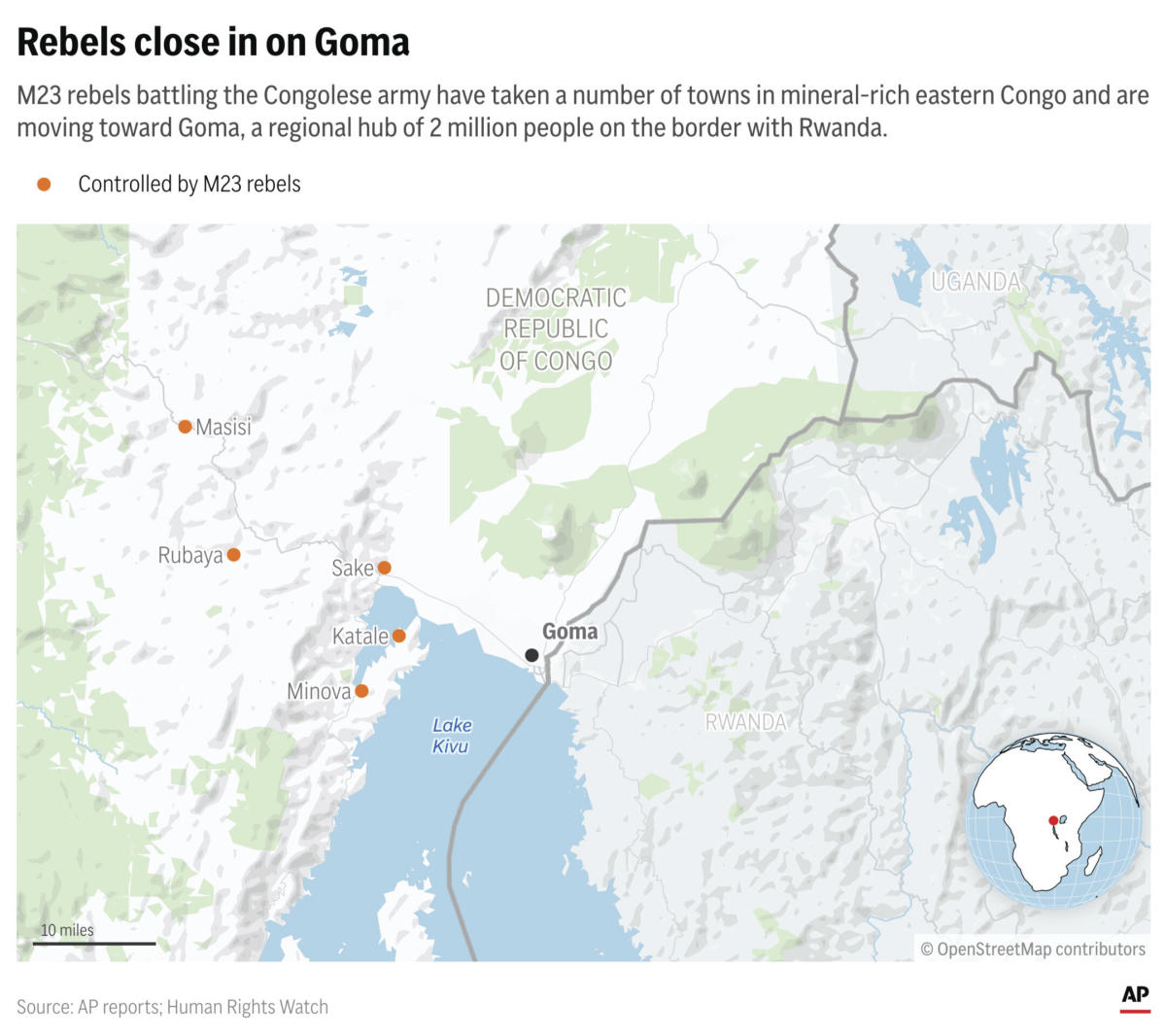Rising Tensions: What the Rebel Threat in Eastern Congo Means for Goma
The eastern region of the Democratic Republic of the Congo (DRC) has long been a hotspot of conflict, characterized by a complex web of rebel groups, ethnic tensions, and a struggle for control over valuable resources. As rebel forces converge on Goma, the capital of North Kivu Province, the situation in eastern Congo intensifies, raising urgent questions about regional stability, humanitarian concerns, and international response. Understanding the implications of this escalating conflict is crucial not only for the residents of Goma but also for the broader African Great Lakes region.
Context of the Conflict
Eastern Congo has been plagued by violence for decades, rooted in the aftermath of the Rwandan Genocide in 1994. The influx of refugees and the subsequent power struggles led to the emergence of numerous armed groups, many of which continue to operate in the region. These groups often engage in violent conflict over territory and resources, exacerbating the already dire humanitarian situation.
Recently, the resurgence of the M23 rebel group has raised alarms. Originally formed in 2012, the M23 has re-emerged, claiming to fight against discrimination and marginalization of certain ethnic groups. Their advance towards Goma signals a potential escalation in violence, threatening not only the stability of North Kivu but also the broader geopolitical landscape.
The Humanitarian Crisis
The escalating conflict places immense strain on the civilian population of Goma. As rebel forces draw closer, thousands of residents are faced with the prospect of displacement, further compounding an already critical humanitarian crisis. The United Nations estimates that more than 5 million people are internally displaced in the DRC, with the majority of these individuals located in the eastern provinces.
- Displacement: As fighting intensifies, many families are forced to flee their homes, leading to overcrowded camps that lack adequate shelter, food, and healthcare.
- Food Insecurity: The ongoing conflict disrupts agricultural activities, heightening the risk of famine. With many areas becoming inaccessible, humanitarian aid is increasingly difficult to deliver.
- Health Risks: The lack of basic healthcare services, combined with the threat of disease outbreaks, poses a significant risk to vulnerable populations, particularly women and children.
Implications for Goma
Goma, a city of over a million residents, is strategically located near the Rwandan border and is a critical hub for trade and humanitarian assistance. The convergence of rebel forces poses several implications for Goma:
- Security Concerns: The immediate threat to Goma’s security is profound. An encroaching rebel presence could lead to increased violence, looting, and chaos, destabilizing the city.
- Economic Impact: Goma’s economy, heavily reliant on trade and tourism, could suffer significant setbacks. Business closures and a decline in tourism could result in widespread unemployment and economic hardship.
- Increased Refugee Influx: As residents flee conflict zones, Goma may see an influx of refugees, further straining resources and services already under pressure.
International Response and Regional Dynamics
The international community’s response to the rising tensions in eastern Congo is crucial. The United Nations has a long-standing presence in the region through MONUSCO, its peacekeeping mission, which aims to protect civilians and support stability. However, the effectiveness of these missions has been questioned, especially in light of ongoing violence.
Regional dynamics also play a critical role in the conflict. The DRC shares borders with several countries, including Rwanda and Uganda, both of which have been implicated in supporting various rebel groups in the past. The involvement of these neighboring nations complicates the situation, creating a challenging environment for peace negotiations.
Hope Amidst the Crisis
Despite the grim outlook, there remains a glimmer of hope. Local communities and organizations continue to work tirelessly to provide support to those affected by the conflict. Grassroots initiatives focused on peacebuilding, education, and healthcare are crucial in fostering resilience among the population. Moreover, the international community’s engagement, if focused and sustained, can provide the necessary resources to mitigate the humanitarian crisis.
Conclusion
The rising tensions and rebel threat in eastern Congo, particularly as forces converge on Goma, signify a critical juncture for the region. While the implications of this conflict are dire, the resilience of the Congolese people and the potential for international support offer a path forward. It is imperative that all stakeholders, including local communities, regional actors, and the international community, come together to address the multifaceted challenges posed by this crisis. Only through collective action can there be hope for a peaceful and stable future for Goma and the greater eastern Congo region.
See more CNN Headline


